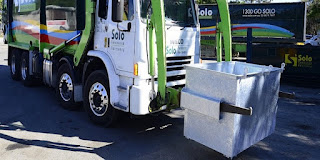Benefits of Ecofriendly Disposal of E-Waste
Recycling
e-waste has numerous environmental benefits. Electronic waste (E-Waste) is a
term used to describe any electronic hardware that has been discarded because
it is broken, undesirable, nearing the end of its useful life, or is currently
not being used. PCs, printers, phones, TVs, and sound systems are examples of
electronic equipment and parts that constitute E-waste. E-waste from businesses
includes broken dialysis machines, knead seats, imaging hardware, autoclaves,
and so on. Regular e-waste can be separated into the following groups:
·
Home machines
·
Correspondences and
Information Technology Devices
·
Electronic Utilities
·
Office and Medical Equipment
·
Home Entertainment Devices
In
today's mechanical world, the definition of e-waste may not always mean broken
or expired products that have stopped working. Mechanical advancements have
delivered some electronic hardware e-waste in any case, when it is in excellent
condition. Consider the VCRs that lingered for a long time after DVD players
were introduced. When manufacturers believe they can create a better version of
an item, previous versions may become electronic waste.
If
you look at electronic waste measurements over the long haul, the numbers are
undeniably high, with a critical level of undesirable yet working electronic
devices. For example, cell compositions create cell phones that are not
intended to last more than two years in order to increase sales. E-waste is
possibly the most rapidly evolving environmental issue on the planet, so
guidelines were established to manage waste electronic garbage removal.
Safe
electronic recycling provides critical benefits to the global economy at large.
Electronic recycling can begin in your own home and progress to workplaces and
large assembly lines.
Impacts
of E-Waste On The Environment And Safety
When
it comes to the benefits of recycling electronic waste, it is critical to
understand the effects of this loss on the environment and the security of
living things. A couple of general outcomes are summarised below:
Most
hardware contains toxic elements such as lead, nickel, zinc, and chromium. When
this enters the climate, it causes medical conditions in people who come into
contact with it, either directly or indirectly.
Inadequate
removal of this loss through consumption results in the release of harmful
gases into the atmosphere, which harms the barometric layers.
E-waste
disposed of in landfills saturates groundwater, causing problems for both land
and sea animals. Many fish that die from unnatural causes have a portion of
these harmful substances in their system.
Improvement
of neurological, regenerative, and other environmental issues for people who
breathe in, apply, or consume any substance containing e-waste.
E-waste
has caused territorial damage to people and animals for the sole purpose of
being used as unloading sites.
Elevated
levels of e-waste poisonous substances in the soil kill plants and reduce
farming yield. Individuals and animals suffer from a lack of food in the
absence of a thriving rural industry.
Changes
in barometric pressure caused by poisonous gases cause climatic changes such as
an increase in global temperature.
Indeed,
even as the e-waste problem worsens, the recycling industry has grown
significantly. There are various international regions dedicated to e-wasterecycling and providing employment to a large number of people all over the
world. China handles nearly 70% of the world's e-waste recycling requirements.
In any case, without proper recycling, much of this waste ends up in the hands
of salvaged material vendors.
As
you will see in this article, legitimate recycling can produce a lot of good.
Aside from improving the environment, it also protects networks from the health
risks posed by these wastes. The following are some of the environmental
benefits of e-waste recycling:
Ecological
Benefits of Recycling Electronic Waste
1.
Diminished Mining of Virgin Resources
The
majority of electronic components contain minerals and metallic components that
should be mined from various mining fields around the world. Property mining
continues unabated, prompting consumption and negatively influencing the
climate.
Looking
at the conflict mineral measurements from regions in and around DRC Congo,
illegal mining is on the rise, and the consequences for the general prosperity
of the areas are not pleasant. When you reuse electronic parts like circuit
boards, a significant amount of these components like tin, gold, palladium,
copper, and silver are collected from e-waste.
For
example, harvesting tin from electronic parts reduces the amount of tin mined
from underground properties significantly. Consider this: 1 ton of circuit
loads up could yield 40-800 times more gold and 30-40 times more copper than
mining 1 ton of metal.
2. Gives an Environmentally Friendly Source Of Resources
To Manufacturers
Every
time you buy a new electronic device, the metallic and plastic compositions
come from somewhere. When the old ones are discarded, the negative consequences
multiply: more metallic and plastic properties are exposed, and the waste harms
the environment. All else being equal, practicing safe recycling of unwanted
devices implies that you save the environment from being exploited and also
protect it from unnecessary e-waste.
Because
e-waste does not degrade quickly, dumping these metallic components rather than
recycling them only adds to bio-risks to the environment and people.
Appropriate e-waste recycling implies that factories have a non-harmful to the
environment source of metallic and plastic materials to deliver new devices.
For example, hard drives can be processed into aluminum ingots for use by
automobile manufacturers. As a result, you can reduce the consumption of these
properties and the impact of e-waste on the environment.




.jpg)
Comments
Post a Comment